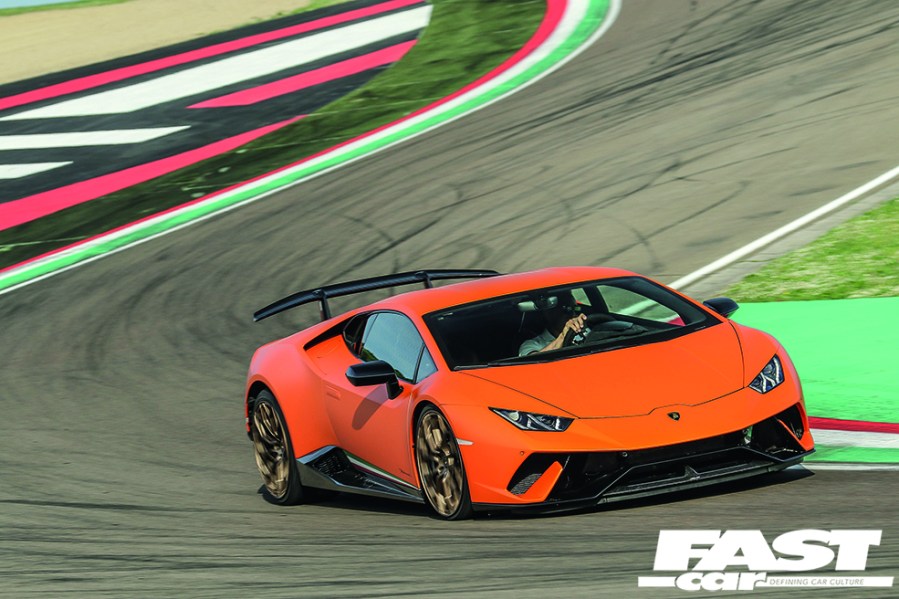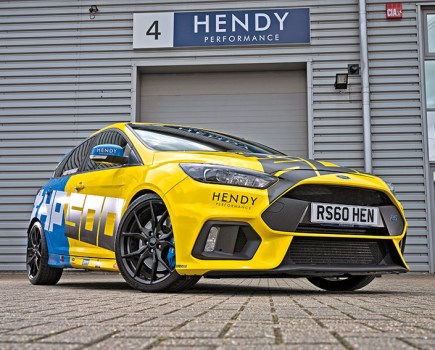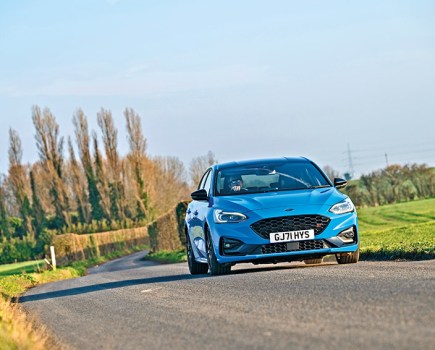The Lamborghini Huracan Performante has quite a heritage to live up to, as there have been some very special tuned model’s in the company’s history. Tweaked and lightened, how does the track-focused Huracan fare on the road?
While it’s usual to avoid the N-word, it seems impossible here. The taboo term is, of course, ‘Nürburgring’ – the notorious circuit where the Lamborghini Huracan Performante forged its reputation, laying waste to hypercars with a record-breaking 6min 52.1sec lap. Admittedly, the hardcore Huracan has since been bested by the Porsche 991 GT2 RS, but no matter. For supercar fans, this puts Lamborghini back on the map.
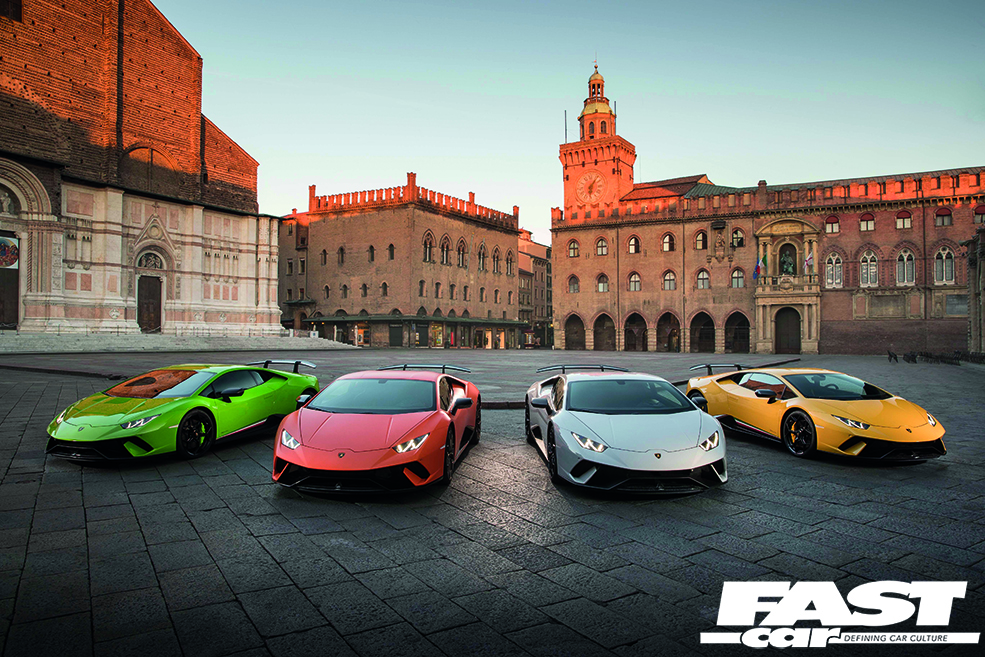
Or does it? Many of us have grown weary of Nürburgring times. New records are seemingly set and smashed every month, and stripped-out specials such as the VW Golf GTI Clubsport S – a car designed primarily with the ’Ring in mind – devalue the whole endeavour. Nonetheless, we shouldn’t belittle the Performante’s achievement. This 640bhp upstart is not only seven seconds quicker than its big brother, the 750hp Aventador SV, it also blitzed the 12.9-mile circuit faster than an 899bhp Porsche 918 Spyder.
Watch the in-car footage of the Lamborghini’s lap on YouTube and it looks oddly uneventful. A bit dull, even. That’s hardly an accusation you could level at the car itself, however. Everywhere the Huracán goes, smartphones point, Instagram accounts are updated, tweets are tweeted and snaps are chatted. It’s a mobile social media event. It’s also hugely more head-turning than its Audi R8 sibling, particularly in ‘Arancio Antheus’ matt orange (a £15,756 option). As we soon discover, the driving experience isn’t short on drama either.
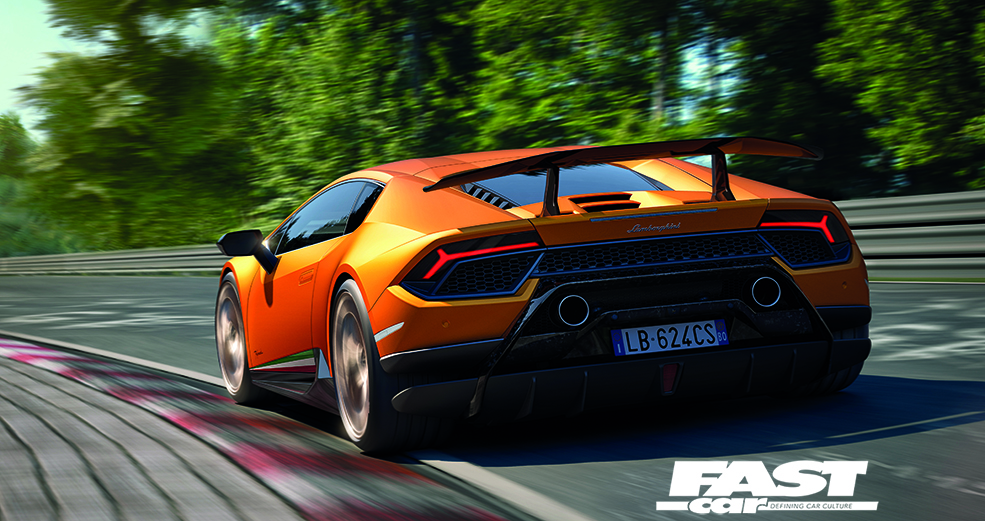
Even more power
The Huracan replaced the long-serving Gallardo as Lamborghini’s baby supercar in 2014, but it’s taken three years for this harder, faster version to emerge. The headline figures for the Performante are 30 extra horses and 40kg less weight, the latter achieved largely through use of ‘forged composite’ – carbon fibre strands set in resin – for the spoilers and some interior parts. Zero to 62mph takes 2.9sec (down 0.3sec), while top speed is an identical 202mph.
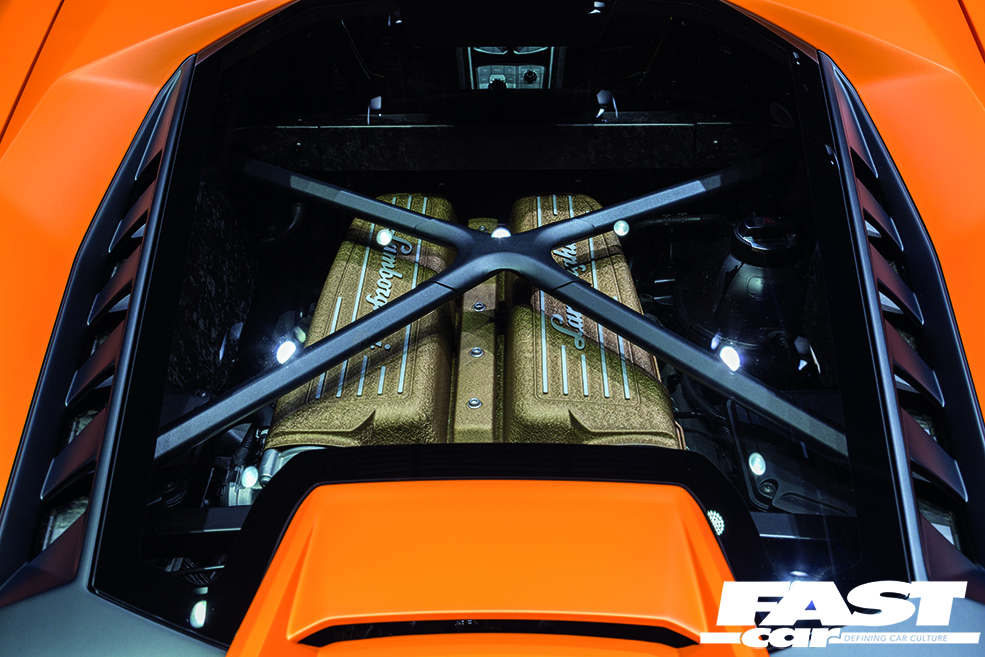
Such gains are incremental, but the Huracan Performante has a few further tricks up its sleeve. The first is active aerodynamics: Aerodynamica Lamborghini Attiva, or ‘ALA’ for short. Depending on driving conditions, the electric front spoiler directs airflow beneath the car (to reduce drag) or opens flaps to channel air through it (to boost downforce). At the rear, large ducts behind the engine cover open or close, scooping air through the car’s hollow rear wing or over it – with similar results. You can even watch ALA at work in real-time via a dashboard display.
The Huracán’s second secret weapon – and key to its giant-killing lap-time – is tyres. Our test-car’s gorgeous 20inch ‘Narvi’ rims came wrapped in semi-sensible Pirelli P Zero Corsa rubber, but the ’Ring record Performante wore optional Pirelli Trofeo Rs. While road-legal, these near-slick tyres are primarily for circuit use and present a mildly terrifying prospect when harnessing 640hp on damp roads.
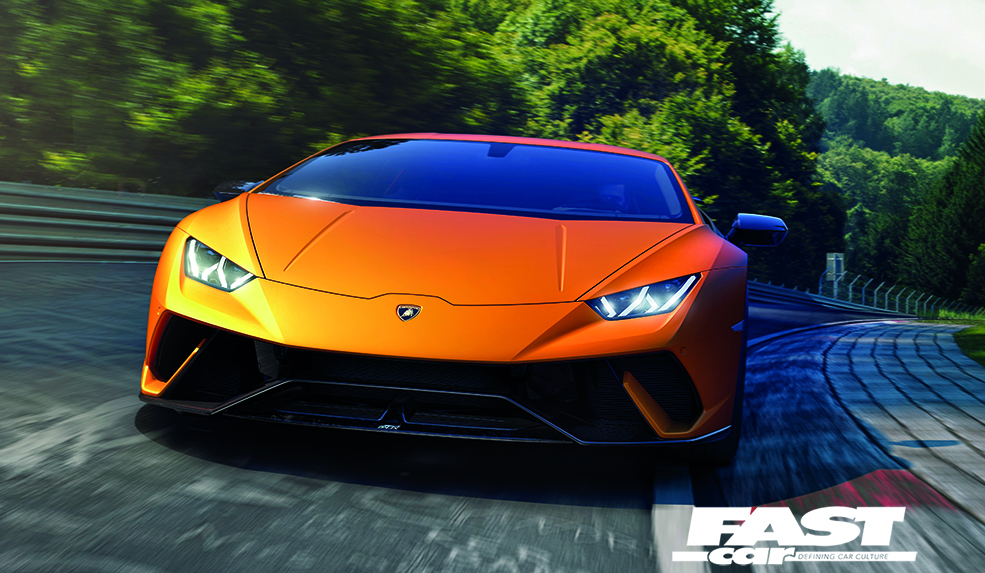
Drizzle, deep puddles and wet leaves are very much on the menu for our encounter with the Performante. They’ll be no track action today, no 200mph heroics. Just a long drive on real roads, in some of the worst weather December has to offer. The car arrives at the office in a covered truck, but the guttural growl of its 5.2-litre, 40-valve V10 as it emerges quickly draws a crowd. You don’t know pressure until you’ve had a group of strangers watch – and film – you execute a tortuous, 37-point turn in a box-fresh Lamborghini. So much for a quick getaway.
Close the conventional door (scissor doors are reserved for the Aventador) and the Performante’s interior is a striking mish-mash of sharp shapes. It feels snug and supercar-special, with tongue-in-cheek details such as Lamborghini’s trademark ‘bomb switch’ starter button and manga-style instrument display. However, infotainment is poor (Apple CarPlay is at least an option) and the forged composite trim looks uncomfortably like off-cuts from a kitchen worktop. There are several infuriating details, too: notably the steering-wheel-mounted switches for indicators and headlights. Try signalling or switching to main beam with the wheel in anything other than a straight-ahead position and you’ll see what I mean.
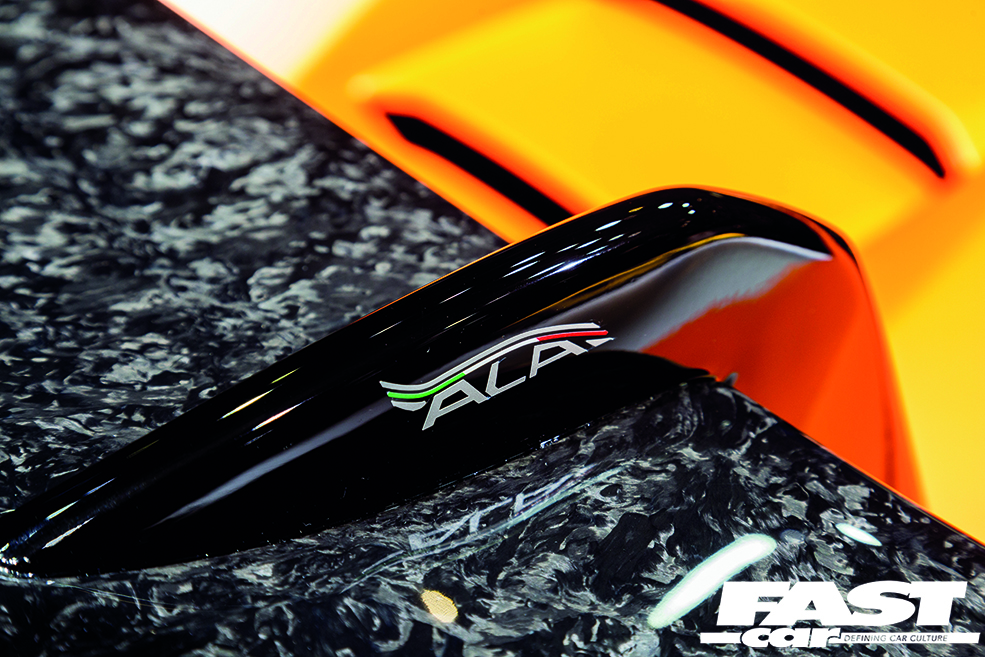
Such trivia is fast forgotten as, having crawled conspicuously through the Surrey suburbs, I finally reach a dual-carriageway. Foot to the floor, the Huracán erupts, its V10 detonating with a savage snarl that makes every hair on your body snap to attention. It feels raw and red-blooded – and savagely, ludicrously quick. With no turbochargers to spool up, throttle response is instant and wonderfully linear, and the drama doesn’t stop until 8500rpm. If there’s a more exhilarating road car engine out there, I’ve yet to try it.
Thankfully, the Lamborghini’s drivetrain feels well up to the job. Unlike, for example, the 911 GT2 RS, the Performante is four-wheel drive, and what it gains in weight is – for the vast majority of ‘average’ drivers, myself included – easily offset by its ability to transfer torque to tarmac. Put simply, there are few supercars that make driving fast so easy. Where a GT2 or Mercedes-AMG GT R demands a cautious right foot in inclement weather, the Huracán mostly just grips and goes. And boy, does it go.
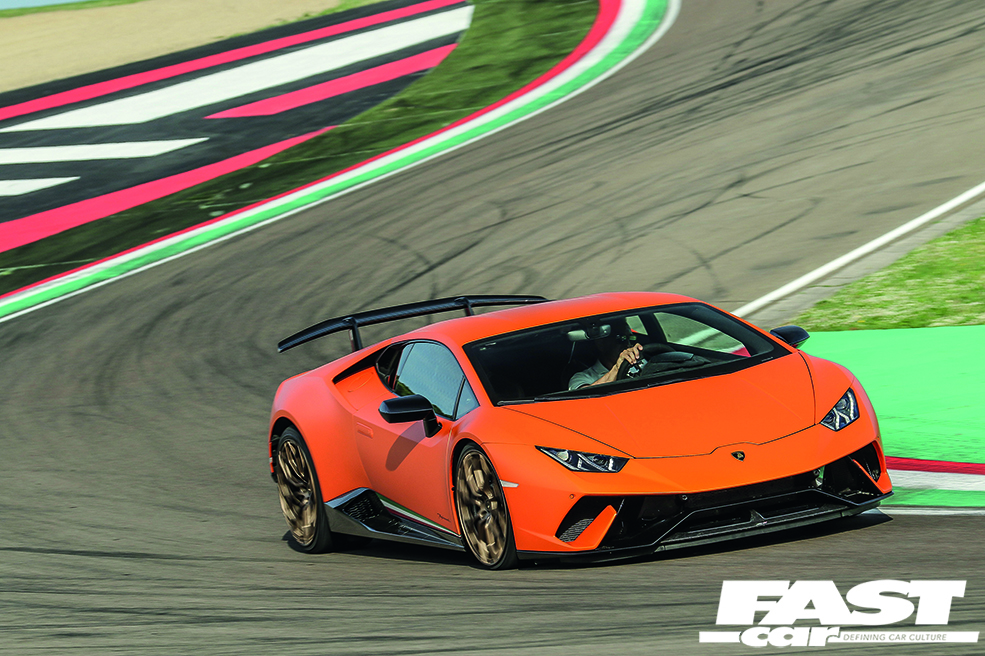
Paddle shifting
You can drive this car in automatic, but you rarely will. Huge, racer-style paddles provide whipcrack-fast progress through the seven ratios, plus fabulous over-run pops if you’re indelicate with downshifts. There are three driving modes to choose from: Strada (road), Sport and Corsa (race), the latter two sharpening the car’s responses and ramping up the rumble of the exhausts for good measure.
And it’s that noise, a ferocious bark that builds to a head-spinning howl, that dominates your experience and gnaws at your soul. The V10 is an ardent, physical presence. Its roar reverberates through your gut, setting off car alarms, scaring dogs and making pensioners scowl. Me? I was grinning like a toddler in a toy shop. Rarely have I driven for several hours without reaching for Radio 6, but doing so in the Hurácan feels like sacrilege. This is machine music: a bombastic blast of Bach, Led Zeppelin and The Prodigy – with the volume knob locked at 11.
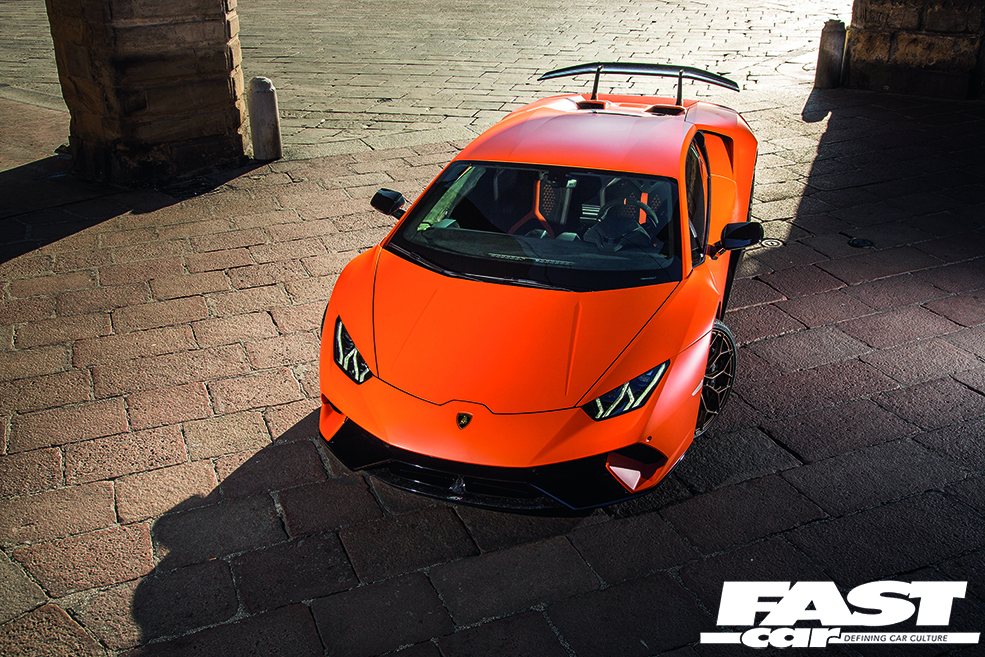
The afternoon light is fading but the rain has finally fizzled out as I cross into rural West Sussex. Here, on hedge-lined lanes where a hot hatch would shine, the Lamborghini feels wide, but not hopelessly oversized like an Aventador. We’re a long way from Harrods now, so I switch to best-of-both-worlds Sport mode, revelling in the stability and slingshot-speed out of bends. Being 4WD, it’s less playful and adjustable than a powerful rear-driver, yet also less intimidating. And there’s no doubting the Performante’s otherworldly, aero-enhanced grip, or indeed its untapped potential. I’m barely scratching the surface.
Communication needed
It’s not all good news, however. This car has the standard steering set-up, rather than Lamborghini’s poorly-received LDS variable-rate system, but my fingertips remain unconvinced. It’s light and flighty like modern Ferraris, but neither as communicative nor confidence-inspiring as you’d hope. McLaren willingly takes a hit on CO2 emissions to stick with old-school hydraulic steering, and the difference is manifest. A 570S or 720S relays every nuance of the road surface, while the Performante feels ever-so-slightly detached and disinterested. Lamborghini would be wise to study VW Group sister-brand, Porsche, which – after years of trying – has finally mastered the art of feelsome electric feedback.
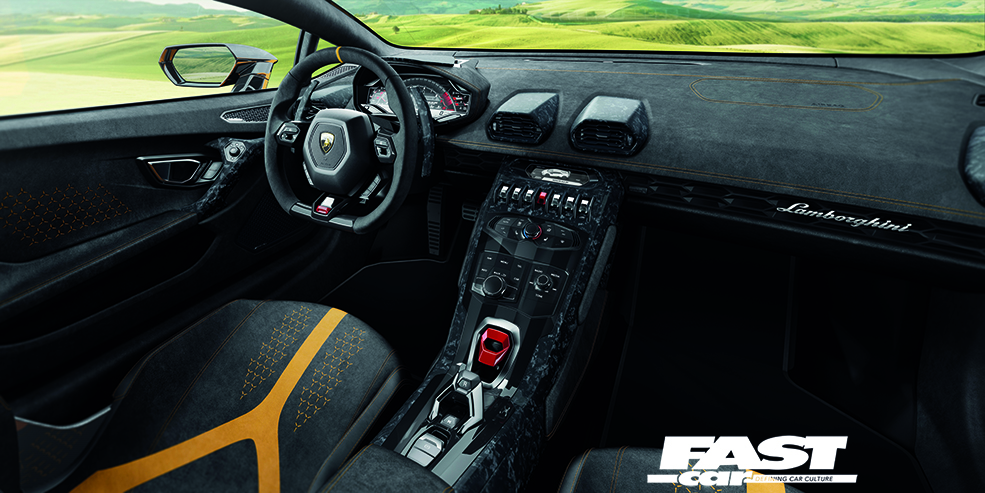
Also, the Performante’s huge ceramic brakes, while brutally effective at the Nürburgring, are a little hard to modulate on the B2138 to Fittleworth. There’s a dead patch at the top of the pedal travel and an ‘on/off’ feel when cold. The ride, too, is noticeably more brittle than the regular Huracán, thumping over expansion joints and jarring through potholes. You could live with it, but you’d rather not. It goes without saying that the optional nose-lift kit (£5,148 with Magneride suspension) is essential, or you risk being stranded at the first speed hump.
A stop for super unleaded – a regular occurrence when averaging 15mpg – gives me pause to gather my thoughts. Actually, scratch that: the minute I pull up at the pumps, I’m mobbed by a group of lads taking photos and enthusiastically asking me to “rev it”. Even the lady cashier seems enthused: “How fast have you gone?”, she asks. This is what happens when you drive a fluoro-orange Lamborghini, it’s all a tad overwhelming.
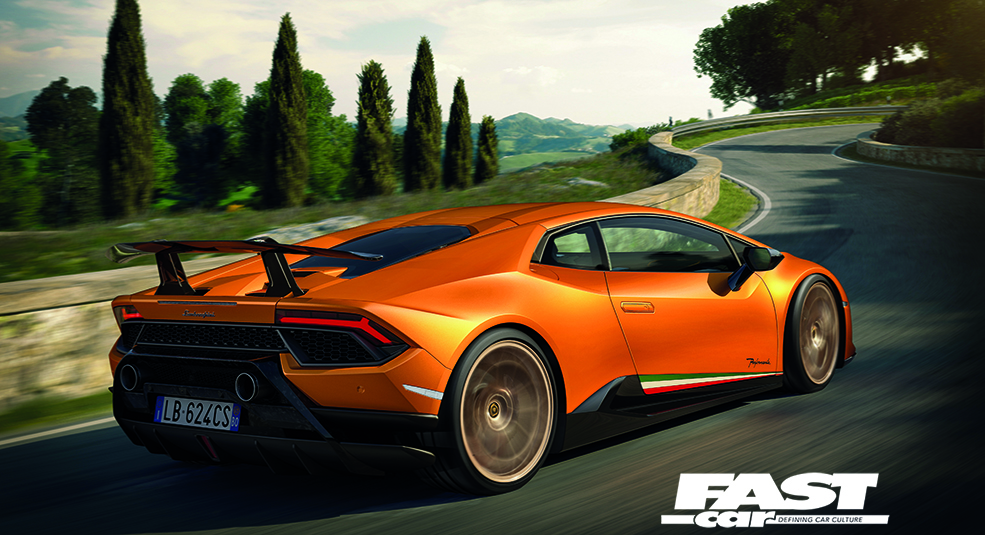
I arrive home late, but the sensory overload of the drive buzzes around my brain and it’s several hours before I settle to sleep. The Performante has been intense and intoxicating, a car that pushed and kicked at the boundaries of my experience. It’s a fully-paid-up supercar, with everything that implies: outrageous looks, incredible speed and a spine-tingling soundtrack. And it has the greatest engine of any car on sale. Job done, then.
If you have £207,925 to spare and already have a garage-full of supercars (as most owners surely will), the Lamborghini is worthy addition to your collection. You could drive it to the track, spend a day setting superhuman lap times and then drive it home. However, for all the Performante’s headline-grabbing ability, for me, the ‘standard’ Huracán LP 610-4 still outshines it on the road. It delivers 95 per cent of the drama and excitement, but without sacrificing the supple, daily-driving comfort of the donor Audi R8. It’s also £27,000 cheaper. There, who predicted we’d actually conclude a Lamborghini review with some useful consumer advice?
Tech spec: Lamborghini Huracan Performante
Engine: V10, mid-mounted, 5,204cc
Transmission: Seven-speed dual-clutch semi-auto, four-wheel drive
Chassis: Aluminium and carbonfibre monocoque
Suspension: Double wishbones, coil springs
Wheels: 20in forged alloys
Tyres: 245/30 ZR20 (front), 305/30 ZR20 (rear)
Brakes: Ceramic discs – 380mm front, 356mm rear
Power: 640bhp@8,000rpm
Torque: 442lb ft @6,500rpm
0-62mph: 2.9 seconds
Top speed: 202mph
Fuel economy: 20.6mpg
CO2 emissions: 314g/km
Price: £207,925
Price as tested: £257,185
This article is taken from Ultimate Supercar Issue 2. Words by Tim Pitt (Motoring Research) Photography: Lamborghini

